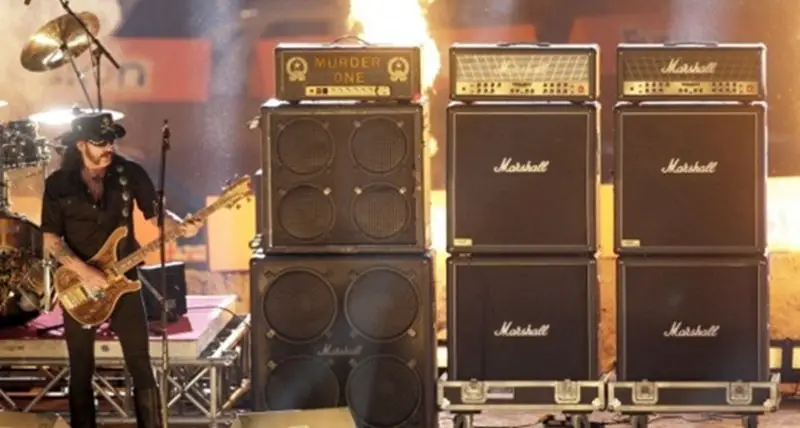
Best Electric Guitar Amps for your guitar that will help you get the right sound from your axe. If you play the electric guitar, you will need a good amplifier to hear its sound. Checkout the best guitar amps from the top manufacturers.
Introduction
A guitar amp is an amplifier that increases the output (level) from the guitar so that it can comfortably drive speakers/headphones. A good-quality guitar amp provides clean tone (and comes with nice effects too, including distortion).Guitar amps work equally well with different types of guitars, be it electric guitars, bass guitars (and even acoustic-electric guitars).
There are different types of guitar amplifiers but these are commonly used as amps for headphones while playing the guitar.
Micro amplifiers
These are small devices that plug directly into the guitar; these come with an output port to which the the headphones has to be connected. Once connected, the amplified audio from your guitar goes directly to your headphones. Example of such an amp: Vox Amplug AC30. These are also known as bug amps.
Mini amplifiers
These are portable guitar amps (larger in size compared to the micro amps), and have to be placed on the floor or a table. Both the guitar as well as the headphones have to be connected to this amplifier (via different cables). The sound of the guitar is amplified by the amplifier, which can then be fed to headphones or external speakers. These have more built-in presets, effects and options (compared to a micro amplifier) and are generally more powerful as well. Example: Line 6 Pocket Pod.
Multi-Effects Possessor / Box and Stompbox): These boxes come with features that include multiple effects, amp simulation, recording, etc; these require a separate cable going to the guitar. You also get compact multi-effect pedals with a guitar headphone amp built in.
For the larger sized amps, here are the two most common guitar amplifier configurations:
- A “combo” (short for ‘combination’) amplifier that includes an amplifier and one or more speakers placed in a single cabinet
- A standalone amplifier (often called a “head” or “amp head”) – doesn’t have built-in speakers – which passes the amplified signal (via a speaker cable) to one or more external speaker cabinets.
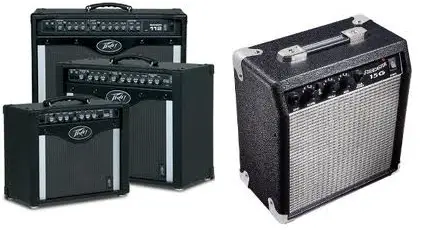 Beginners should ideally go for something (preferably modelling amp) that provides clean distortion and also has built-in effects such as delay, chorus, reverb, etc so that you have more options at your fingertips.
Beginners should ideally go for something (preferably modelling amp) that provides clean distortion and also has built-in effects such as delay, chorus, reverb, etc so that you have more options at your fingertips.
Knobs On the Amp
On the amplifier, you will usually find knobs for Normal Volume, Gain, Drive Select, Drive Volume, Treble, Middle and Bass.
- Gain: The amount of overdrive/distortion
- Drive Select: Turns on the gain/overdrive/distortion
- Drive Volume: Along with the normal volume control, it controls the loudness.
- Treble, Middle, Bass: Adjusts the amount of treble, midrange, and bass.
Best Electric Guitar Amps: Reviews
To fully experience the magic of a fine guitar, you need to plug it into an equally fine amplifier. Whether you’re playing in smaller venues or in concert halls, find the desired amplification to get heard from the front row to the rafters.
There are several types of guitar amplifiers to choose from, such as combo, mini, power amps and so on; you need to use one based on your requirements.
Best Beginner / Practice Amps
Here are some great options for beginners.
Vox amPlug AC30 Guitar Headphone Amp
Vox amPlug AC30 Guitar Headphone Amp plugs directly in to your guitar, you then just need to plug in your headphones and enjoy some great Vox tone.
Bugera V5 5-Watt Class-A Valve Amplifier
The Bugera V5 5-Watt Class-A Valve Amplifier Combo comes with Reverb and Power Attenuator. Good sound and build quality (no rattles), and value for money.
Vox AC4TV All-tube Practice Amplifier
Vox AC4TV All-tube Practice Amplifier comes with EL84 power tube, 12AX7 preamp tube, custom-made VX10 Celestion 10″ speaker.
Here are more powerful Guitar Amps, for the experienced players:
Fender Hot Rod Deluxe(TM) III
The Fender Hot Rod Deluxe III is a 40-watt single 12″ combo that comes with a versatile all-12AX7 tube preamp, comes with Fender spring reverb, effects loop.
Line 6 Spider Valve 112 MkII
The Line 6 Spider Valve 112 MkII 40-watt 1×12 Guitar Combo Amp has 12-inch Celestion Vintage 30 speaker; two 12AX7 preamp tubes; two matched 6L6 power tubes; 4 channels; 128 user-programmable presets.
Peavey ValveKing 112 Combo Amplifier
The Peavey ValveKing 112 Combo Amplifier comes with two 6L6GC and three 12AX7 tubes, two independent footswitchable channels.
Fender Mustang I Electric Guitar Amplifier
Great sound quality, easy to use, and flexible. With the Fender Fuse software, you can download huge amount of amp presets for free. 20 Watts, One channel (with 24 presets), Various Controls such as Gain, Volume, Treble, Bass, Master, Preset Select, Modulation Select, and more.
Line 6 Spider Modeling Guitar Amplifier
A great value amp, with hundreds of presets and distortion/effects settings for different songs. 75 watts; 300+ presets, 20 Smart FX settings, 16 amp models, and more.
Guitar Cord / Cable
You’ll need a guitar cable to connect the guitar to the amplifier. For this, you’ll need a 1/4″ guitar cord, one end plugs into your guitar and the other will go into the amp.
Its a good practice to make sure the cord is plugged in, before you turn ON the amplifier.
Planet Waves American Stage Guitar and Instrument Cable (15 feet)
The Planet Waves American Stage Guitar Cable allows smooth sound transfer from the instrument to the amp and/or pre-amp, and provides very low handling noise, great for home practice, stage and studio.
Best Combo Guitar Amps
Combo guitar amps for electric guitar are popular because of their convenience, ease of use and relative portability.
You will find a huge range of combo amps from leading brands. You can choose fro a state of the art modelling amp or a classic tube amp.
Yamaha THR10 Modeling Guitar Combo Amplifier
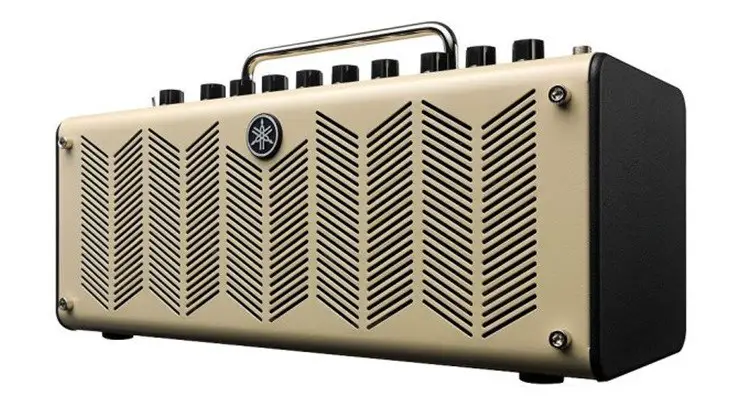 The Yamaha THR10 combo amp features real tube amp tone and dynamics, hi-fi quality stereo playback and full recording capabilities. It comes with the essential amp tones and effects, is battery powered, and offers USB connectivity for recording, playback, and preset editing. 10-watt 1-channel 2×3″, User Setting Recall, 3-band EQ.
The Yamaha THR10 combo amp features real tube amp tone and dynamics, hi-fi quality stereo playback and full recording capabilities. It comes with the essential amp tones and effects, is battery powered, and offers USB connectivity for recording, playback, and preset editing. 10-watt 1-channel 2×3″, User Setting Recall, 3-band EQ.
With the THR10 Desktop combo amp, Yamaha has blurred the lines between tube tone and digital technology. This might be a mini amplifier but it sounds big and recreates the rich sound of an overdriven amp even at low levels, and its USB output is easy to record. It gives you a huge range of guitar tone and is made for all occasions.
- PROS: Sturdy, sounds far more “real” than other modeling amps, the effect are usable, headphone jack
- CONS: Designed to be a practice amp for at-home playing or recording and not really for on-stage performances
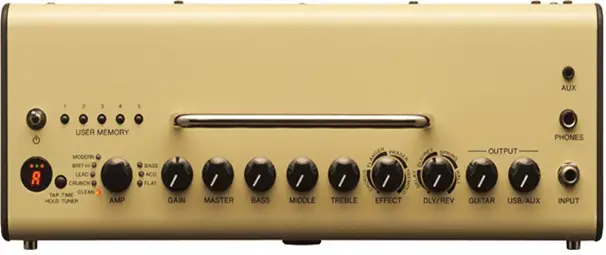
It’s got Clean, Crunch, Lead, Brit Hi, and Modern tube guitar amp models, plus modes for your acoustic guitar or bass and a bypass mode that turns its modeling off. Yamaha’s modeling technology delivers tube-like responsiveness, and adds character to the various built-in effects.
Auxiliary inputs. USB output to send the amp’s big sound directly to your computer. Cubase AI is included in the package, the downloadable THR editor allows you tweak the sounds further.
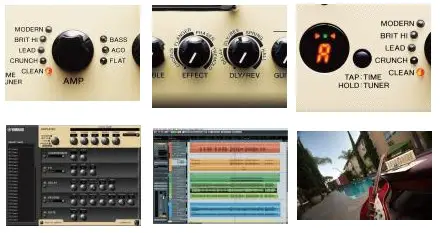
This amp is perfect for playing at home, you get authentic tube tone and an unfiltered clean sound. It can be powered by an AC adapter or AA batteries, so it’s even ready for camping.
Fender 65 Deluxe Reverb Vintage Guitar Combo Amplifier
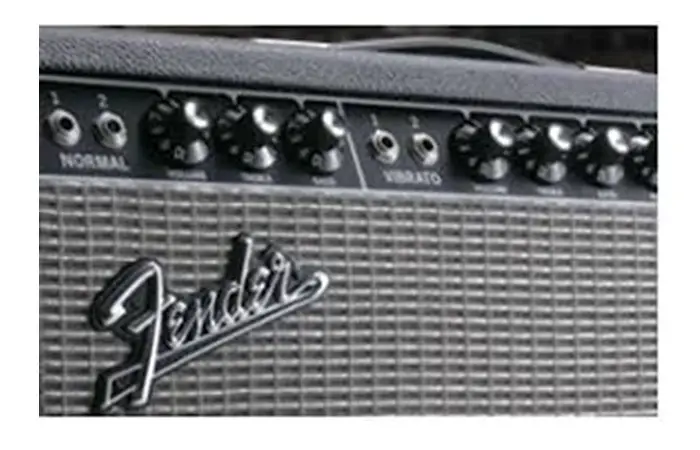 The Fender ’65 Deluxe Reverb Combo Amp delivers 22W power through a 12″ speaker. Features two channels (normal, vibrato), all-tube circuitry, tube vibrato, tube spring reverb, Blackface cosmetics and two-button footswitch to control the reverb and vibrato effects. If you’re looking for a pure Fender tone but don’t need lots of wattage, this is a good amp to consider.
The Fender ’65 Deluxe Reverb Combo Amp delivers 22W power through a 12″ speaker. Features two channels (normal, vibrato), all-tube circuitry, tube vibrato, tube spring reverb, Blackface cosmetics and two-button footswitch to control the reverb and vibrato effects. If you’re looking for a pure Fender tone but don’t need lots of wattage, this is a good amp to consider.
This 22 watts of pure fender tube power is good enough for small clubs and venues. The full, snappy guitar tones heard on many famous recordings from Memphis to Abbey Road were made using the Deluxe amp.
This amp is loud and delivers great clean tones with a nice natural overdrive, and can be used for every genre from rock and roll, blues, and country. The Deluxe Reverb gets a natural tube overdrive, which is the signature tone of this amp. It sounds better than most overdrive pedals out there.
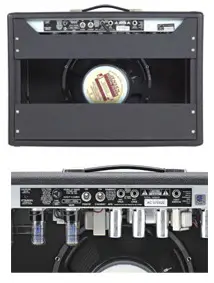
It is a good bet if you’re looking for a reliable tube amp in the price price range suitable for most hobbyists.
Key features:
- Two 6V6 output tubes, one 5AR4 rectifier tube, four 12AX7 preamp tubes, a pair of 12AT7 tubes — all-tube power and tone
- 12-inch Jensen speaker (model C-12K), Speaker Jack: Two 1/4″ Parallel (Internal and External)
- Dual channel operation (clean and vibrato), Classic Fender tube-driven reverb and tube vibrato, Two-button footswitch to control reverb and vibrato
- Inputs: Four – (1/4″, Two Normal and Two Vibrato), Auxiliary Input: N/A
- Voltage: 120V, Wattage: 22 Watts
Best Acoustic Guitar Amps Reviews
Acoustic Guitar Amps: Experienced guitar players use a dedicated acoustic amp to get the best sound from your acoustic guitar. Here, we take a look at the best acoustic guitar amplifiers. Other factors like portability, aesthetics, build quality, built-in effects, EQ, road worthiness, etc. have also been considered.
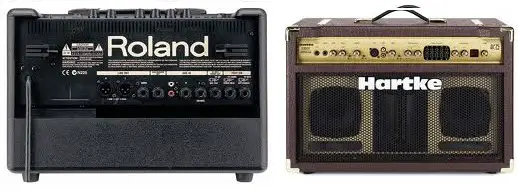
AER Domino 3 Acoustic Guitar Combo Amp (100W)
If you’re a pro guitar player, look no further than this for your acoustic guitar. AER is a famous brand, their amps are not cheap, but they provide excellent acoustic amplification, and offers portability as well.
Roland AC-90 Acoustic Guitar Amp
Roland amps are quite popular among guitarists for its clear tone, and the AC-90 (features 2 8-inch speakers) is a popular acoustic guitar amp. Great, crisp amplification and modern look. More features include phantom anti-feedback, useful effects like delay and reverb. It offers great performance in any situation including busking, to weekend gigs, to studio recording.
Fishman PRO-LBX-600 Loudbox Artist
Fishman is a popular brand that makes electronics for guitars. The Loudbox Artist is a popular, and reasonably priced acoustic guitar amp that provides fantastic acoustic tones, with minimal feedback issues. Comes with two effect sections, more features include EQ, gain and anti-feedback. Classy wooden finish.
Alternatively, you could also look at the Fishman Loudbox Mini Acoustic Instrument Amplifier, which is one notch lower than the artist version.
Also Read:
Best combo keyboard amplifiers.
More guitar amplifiers reviews
Fender Guitar Amps and Cabinets
Fender doesn’t need any introduction, its among the world’s top manufacturers of electric and acoustic guitars, basses, amplifiers, accessories, more. They do have a wide range of amplifiers, ranging from the classic tube-driven combos to modern digital modelers.
Fender guitar amps (and Cabinets) are renowned for reproducing Fender’s clean and overdrive tones, and come with an assortment of effects. Their amps include auxiliary input for jamming with media player, headphone output for silent practice, and lot more.
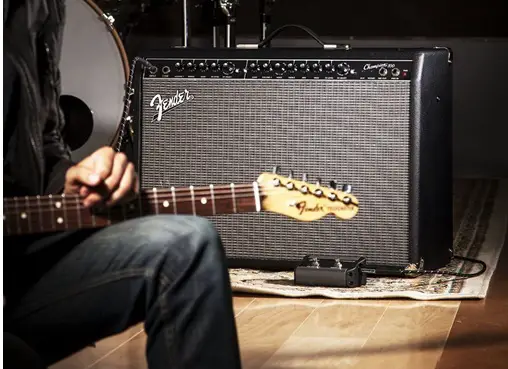
These amps are designed to highlight the iconic tones that Fender guitars are revered for around the world. You may choose from models that offer modern high-gain tones, as well as models that also include rich “Vintage” sounds, making them perfect for performers as well as recording musicians.
Fender Guitar Amps Over the Years
Fender guitar amps have evolved over the years from the tweed era to the black/silver panel models. Along the way, several models became a hit with musicians (during that era) thanks to their unique sonic identities & capabilities. Over the years (Tweed amps, Brown/Blonde Tolex amps, Black/Silver Panel amps), Fender guitar amps have only gotten better.
Experienced and pro-musicians love the old tweed Fender amps (and their similarly constructed modern clones) because the sound they produce is naturally airy and vibrant, and that’s because of the way they’re constructed. The cabinets of Fender amps are made from materials like solid pine, which vibrates better compared to stiffer materials like plywood and MDF (medium density fiberboard).
Benefits of Using Fender Guitar Amps
- Versatile for any style of guitar playing.
- Simple to use control layout
- These come with several onboard effects and amp models
- Several customizable amp voices, gives your tone unlimited possibilities.
- USB connectivity and stereo XLR outputs – Use it with a digital audio workstation, connect to your recording rig or use it with your computer
- Practice anytime, anywhere thanks to the Headphone Output
If you’re looking to add some serious performance and power to your music, you need to take a look at the Fender guitar amps.
Fender amps have great set of features, are versatile. Feel free to use them as standalone tone machine or as part of your personal effects chain.
Best Fender Guitar Amps and Cabinets:
Fender Champion 100 – 100 Watt Electric Guitar Amplifier
The Champion 100 combo amp cranks out 100 solid-state watts of power, offers customizable amp voices. Toggle between clean or mean with the kick of a footswitch. Best for playing loud and proud, in any syle.
Fender Mustang IV (V.2) 150-Watt 2×12 Electric Guitar Combo Amplifier
The Fender Mustang IV comes with the most modernfeatures. Comes loaded with 17 models of classic Fender amps, plus USB and stereo XLR outputs to connect to your recording rig. Let your musical creativity and imagination run wild.
Fender ’65 Twin Reverb 85-Watt 2×12-Inch Guitar Combo Amp
The Fender 65 amp provides crystal-clear and harmonically rich tone, and is perfect for rock, jazz, country or any other style. Features four 6L6 Groove Tubes output tubes, four 12AX7 preamp tubes, two 12AT7 preamp tubes, two 12” 8-ohm Jensen C-12K speakers, dual channels (normal and vibrato), Fender® reverb, vibrato, two-button reverb and vibrato on-off footswitch.
Checkout more Fender Guitar Amps & Cabinets here on zZounds
Mini Guitar Amps
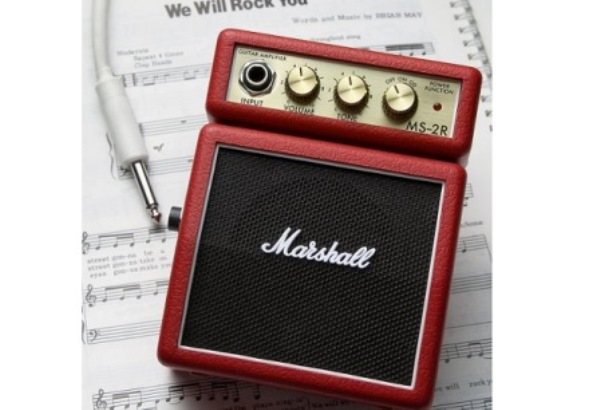
There are times when a mini amp is much more convenient for travel, for personal practice or for performing in small venues. These amps weigh just a few pounds and they’re very easily transported.
Some of the portable practice amps plug directly into your guitar, so you don’t need to buy a guitar cord separately. They use the volume and tone controls from your guitar.
Recommended Guitar Mini Amps:
- Marshall MS2 Micro Guitar Amplifier
- Roland Micro Cube Guitar Amp
- DV Mark Jazz Guitar Amps
- Fender Mini Tonemaster
Roland Micro Cube Guitar Amps
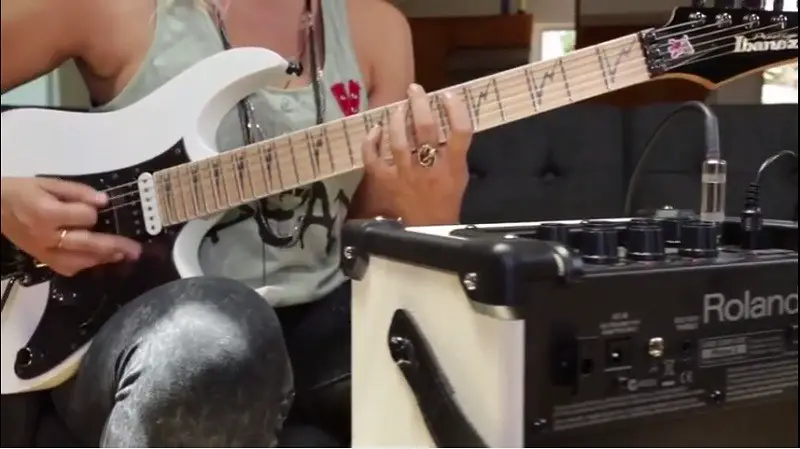
The Roland MICRO CUBE (MC) is the most popular battery-powered amp of all time, and has been around for more than a decade. Over the years, the MICRO CUBE has retained its compact size, but it still remains a powerhouse (thanks to its legendary predecessor), and along the way have added several new features to stay in tune with the times.
Available in RX and GX models.
While most experienced guitar players use a bigger and powerful guitar amp for their gigs (for example a 65 watt Marshall for most things), they can be really heavy to lug around, that is why they also own a practice amp that is easier to carry anywhere.
The microcube amps are smaller, sound sweeter, and is an excellent amp for practicing and training , has enough distortion for almost anything.
Play Guitar Through Headphones: Various Ways
A guitar headphone amp (such as Vox AmPlug) is a good solution for such guitarists who want to practice late at night. Just plug this portable headphone amp directly into your guitar, connect headphones and you can practice any time, anywhere.
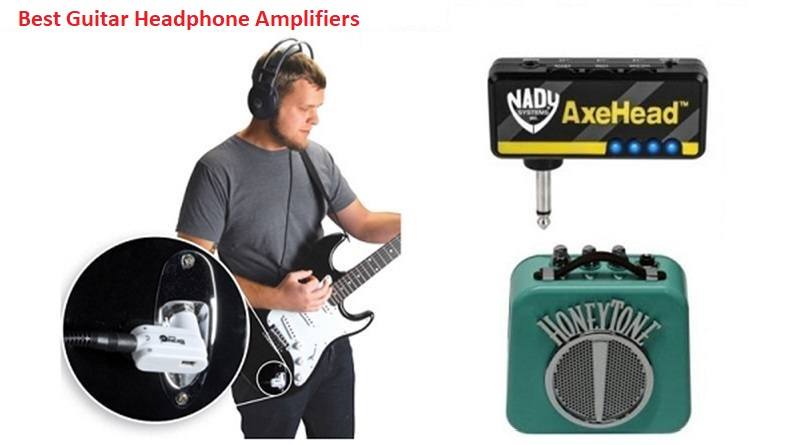
Here are the various ways to listen to your guitar through headphones.
- Plug the headphones directly into your normal guitar amplifier
- Use a Guitar Headphone Amplifier. The guitar amp plugs directly into the guitar, and the headphones plug into the amp. No cables or adapters required.
- Use a Multi-Effects Possessor. These come with several ports, including a headphone output.
- Connect your guitar to your smartphone or tablet via a digital guitar interface designed for mobile devices (the headphones will plug directly into the mobile device).
- Connect your guitar to a Computer using an Audio Interface (the headphones will plug directly into the audio interface)
If you do a lot of work in the studio creating your own tracks, then you need headphones that will give you excellent clarity. You do get good headphones that keep unwanted sound out, very useful in studio where you are looking for a flat sound that you can trust.
Headphones that Plug Directly to an Amplifier
The most common way to use headphones is to plug it in directly to your guitar amplifier. Nowadays, almost all guitar amplifiers have a dedicated headphone output jack. Just plugin and you are good to go.
Please note that the headphone outputs on most guitar amps require you to use a 1/4″ cable. Most standard pair of headphones on the other hand use a 3.5mm, or 1/8″, cable. So, you may need to
The most common way to use headphones is to plug it in directly to your guitar amplifier. Nowadays, almost all guitar amplifiers have a dedicated headphone output jack. Just plugin and you are good to go.
Please note that the headphone outputs on most guitar amps require you to use a 1/4” cable. Most standard pair of headphones on the other hand use a 3.5mm, or 1/8″, cable. So, you may need to purchase an adapter (available for under $10) to plugin the headphones into the guitar amplifier.
My best headphone recommendation would be Audio-Technica ATH M50x. They already come with a 1/4″ adapter out of the box.
Here are some more recommendations.
- Sennheiser HD 280: Super sleek design, Lightweight, Gold plated connector
- Sony MDR7506: Foldable, Large-diaphragm size
A Guitar headphone amplifier is a mini sized self-contained guitar amplifier (small enough to fit in your pocket). It’s a tiny instrument that occupies minimal space.
A headphone amp is plugged into a guitar, and the headphones plug into the 3.5mm output of the guitar amp. No cables or adapters are required, which makes it very convenient to use. So, connect the amp to your guitar, and plugin headphones in the amplifier. That’s it!
Most headphone amps also come with an AUX input jack, so you can also play-along to your favorite song on your mp3 player if you wish to.
In addition to practicing at home, you can even use it to warm up before a live performance or use it when traveling.
My recommended guitar headphone amp is the Vox Amplug AC30 guitar headphone amp. You will find several different amp models from Vox for different types of music, such as metal, clean, classic rock, and blues, so you can also choose a model that suits your playing style.
You can check out more Guitar Headphone Amps here.
Guitar Amplifiers Guide for Dummies
Guitar Amp: Components
An amp, in general, consists of a box or cabinet (usually wooden) which contains:
- Speaker(s)
- Amp (aka head). This is an electronics-chassis designed with either transistor(s). or the classic ‘vacuum tube(s)’.
- Interconnecting wiring or circuit boards to facilitate mass-manufacturing.
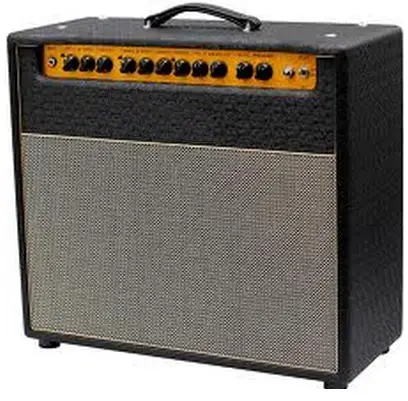 A combination (“combo”) amplifier includes an amplifier and one or more speakers in a single cabinet. In a compo amplifier, the amp head and speakers are housed in one single unit, thus making it portable. You do not have to worry about making the connection from the amplifier to the speakers. An alternative to using a combo amplifier would be to buy an amp head (contains only the amplifier) which would then need to be plugged into external speakers.
A combination (“combo”) amplifier includes an amplifier and one or more speakers in a single cabinet. In a compo amplifier, the amp head and speakers are housed in one single unit, thus making it portable. You do not have to worry about making the connection from the amplifier to the speakers. An alternative to using a combo amplifier would be to buy an amp head (contains only the amplifier) which would then need to be plugged into external speakers.
Features (At a Glance)
Wattage
Wattage (power): While a 20-watt guitar amp offers double the power as a 10-watt guitar amp, doubling the power only increases the volume output by three decibels. In general, up to 30 watts is considered a small amp (practice amps), and over 60 watts is considered a large amp (for smaller venues you need around 50-80, and at least 100 watts for a large live gig setup).
Speaker size
A small speaker (6 inches) produces a smaller sound with emphasis on higher frequencies; a larger speaker (12 inches) produces a rich sound with a full low end.
EQ
You can use EQ (equalizer) to adjust the loudness and softness of specific frequencies; this helps you change the tonal color of your guitar. Most guitar amps let you control 2 or 3 general frequencies: highs (treble) and lows (bass) or highs, mids, and lows.
Built-in effects
Effects such as reverb and chorus are commonly found on most amps. You can also buy effects separately.
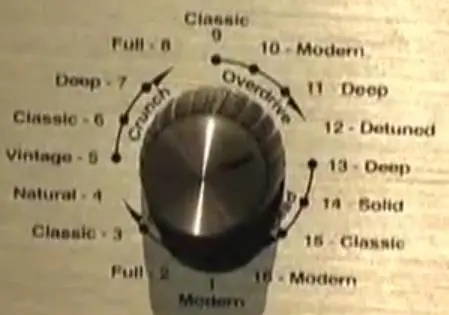
Price
A 10-watt solid state guitar amp with 5-inch speakers can cost around $50. A 40-watt tube amp with 12-inch speakers can cost around $800. The $250-$300 price range is where you will find the most variety and the best value.
Here’s how the connection is made, and how the overall sound is produced:
The output jack of the guitar is connected, using a guitar cord (standard 1/4-inch phone plug) to the guitar amplifier’s input jack. The signal then enters a pre-amplifier stage, where the signal is boosted, and tone shaping such as bass-mid-treble, or effects such as ‘reverb’ or ‘chorus’ are applied. The signal then moves to the main power amplifier, where its boosted several times louder than the original one coming from the guitar. The output from the power amplifier goes to the loudspeakers.
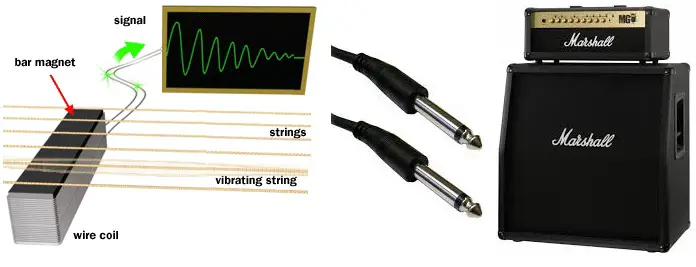
Does Speakers Size Matter?
What you should remember is that smaller speakers can produce higher frequencies than larger speakers. For the same reason, tweeter is small (for high-pitched notes) and a woofer (for bass sounds) is large in size.
So, in general, a 10-inch speaker will produce a better “top end” than a 15-inch speaker.
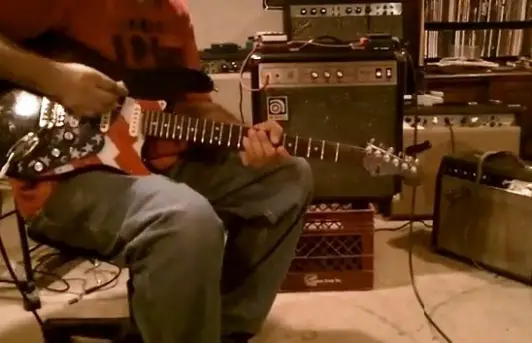
Solid-State or Tube?
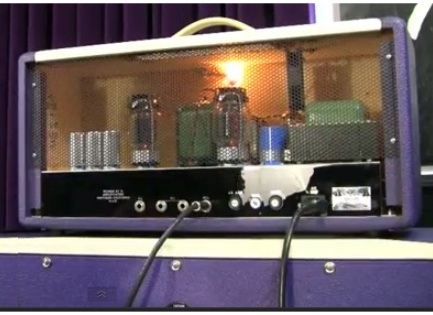 Once upon a time, guitar amps were made of tubes (small amplification devices), but then there were some practical problems associated with using Tubes. Later on, when transistors (IC chips) were invented, amplifiers based on that technology started getting produced; these are supposed to be much cleaner and modern technology, makes the amps much lighter, requires no maintenance required, and has all that good stuff.
Once upon a time, guitar amps were made of tubes (small amplification devices), but then there were some practical problems associated with using Tubes. Later on, when transistors (IC chips) were invented, amplifiers based on that technology started getting produced; these are supposed to be much cleaner and modern technology, makes the amps much lighter, requires no maintenance required, and has all that good stuff.
Experienced guitarists however have started going back to the old Tube amplifiers. Most serious guitarists prefer tube amps because of their warm tone and natural distortions; a Tube amp also sound louder hence are preferred by guitarists who are usually into playing rock guitar.
But because of wear and tear over time, the tubes need changing as their performance can deteriorate with passage of time. Tube amps are also expensive, part of the reason being the scarcity of good vacuum tube manufacturers.
Solid state circuitry, on the other hand, can produce superior clean power at a much more affordable price. Solid state amps use transistors (small electronic device) instead of tubes for their preamp and power sections of the amp. These amplifiers provide a very clean tone, some even come with “distortion” channels as well. They are sturdy and seldom need repairs, which explains the popularity of Solid-State Amplifier among guitar players for gigs/touring.
Beginner guitar players should opt for solid-state amp as they tend be cheaper and cleaner.
Also, if you play the acoustic guitar or play jazz, you may like solid-state guitar amps more than tube amps because of the cleaner sound and the fact that the sounds do not get colored.
Understanding Hybrid Amplifier
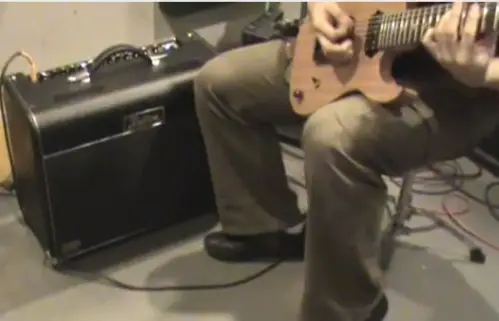 A Hybrid amp use the best of both worlds – tube technology and solid-state design, and eliminates most of the problems associated with tube amps, and still provides the punchy tone and responsive touch of classic tube amplification. These combine the best of each type of amp in one box so you get the best sound at a reduced cost.
A Hybrid amp use the best of both worlds – tube technology and solid-state design, and eliminates most of the problems associated with tube amps, and still provides the punchy tone and responsive touch of classic tube amplification. These combine the best of each type of amp in one box so you get the best sound at a reduced cost.
Hybrid amps tend to be cheaper and can sound pretty good.
Benefits of modeling Amps
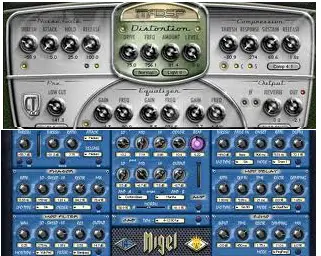 Modeling amps use software and digital processors that simulate the sound of various amplifiers – tube amplifiers (and cabinets) (thus giving you the best of all worlds). Basically, using software, the sound from various amps are taken and put in one box.
Modeling amps use software and digital processors that simulate the sound of various amplifiers – tube amplifiers (and cabinets) (thus giving you the best of all worlds). Basically, using software, the sound from various amps are taken and put in one box.
Software & computer hardware is becoming more powerful and flexible and that is why there are so many takers for modeling amplifiers.
The previous generation of modeling technology didn’t do well against the likes of tube amps because it could not handle harmonics and the decay properly. But not anymore!
Modeling Amps are fast becoming popular because of their ability to produce various types of sounds, suitable for varied purposes. These are affordable and have several practical benefits.
The recent modeling amps are very good, they are lightweight, and not prone to humming and buzzing sounds. In fact, you would be amazed to hear the kind of tones that can be produced with modeling.
You will also find built-in digital effects such as delay, chorus, etc. in these guitar amps. Some may also include digital or analog outputs with speaker simulation and the output can go directly into a recording interface or PA system.
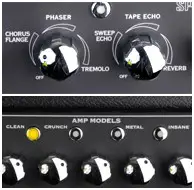 The advantages of using these amps:
The advantages of using these amps:
An entry-level modeling amplifier for guitar will provide you a lesser number of tones and effects, and maybe a few of them will only sound realistic while the others would be just about okay.
The more expensive ones will give you a fairly extensive library of effects like distortion, chorusing, flanging, wah-wah sound or even multi-effects like chorus and delay plus reverb. Thanks to modeling, all these effects are designed to be amazingly quiet, minus all the noise.
Modeling amps can be used as a practice amp, studio amp, and live amp.
Tube Headphone Amp
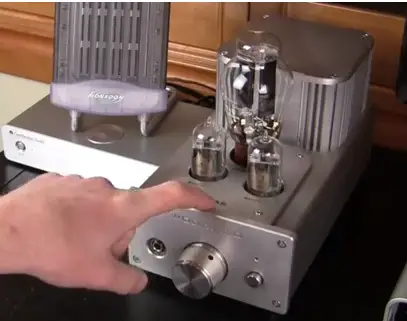
While tube amps may not measure as well as their solid-state counterparts, there are many who feel that tubes more faithfully reproduce the sound of voices and real instruments. Most guitar players use tube amps because they like the distorted sound that these amps produce.
However, as with most things, opinions about sound quality don’t have to be true for everybody and you may like something that several others may not like.
What Guitar Amp to Choose
When it comes to using a guitar amp, things like personal preferences, kind of music you like, matter. So, it comes down to the player and what’s being played. Use whatever suits you; over the years your preference of gear will also change as you playing improves.

When it comes to practice amps, there are several good options with nice cleans, distortions, and effects. In general, if you do a lot of gigs and need a lot of different sounds within your set, modeling products are more practical and more portable compared to a multi-amp rig with several effects pedals.
There are many who like the idea of a modeling amp and effects but still prefer to play it through a traditional amp to warm up the sound.
Guitar to Home Theater System Instead of Guitar Amp
If you have a good home theatre system, then you can even make your guitar sound pretty cool. It may not be a portable option, but for practicing at home, its an option available to you, until you decide to get a guitar amplifier.
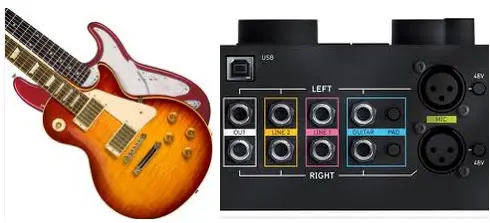
KeytarHQ editorial team includes musicians who write and review products for pianists, keyboardists, guitarists & other musicians. KeytarHQ is the best online resource for information on keyboards, pianos, synths, keytars, guitars and music gear for musicians of all abilities, ages and interests.
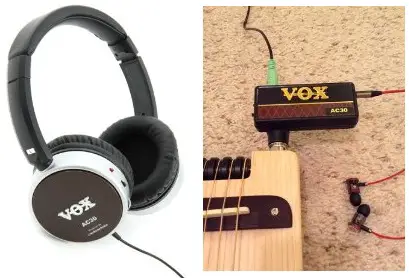



Leave a Reply